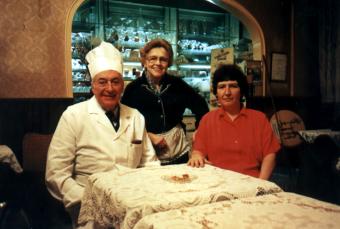 |
VERS
LA MER
Bis ans Meer
To the sea
Annik Leroy
Belgien 1999
Produktion:
Cobra Films, RTBF Liège, CBA
Weltvertrieb: Centre de l’audiovisuel à Bruxelles (CBA) 19F,
Avenue des Arts, 1000 Bruxelles
Tel. (32-2) 227 22 30, Fax 227 22 39
Buch:
Annik Leroy, Marie Vermeiren Kamera: Annik Leroy
Ton: Marie Vermeiren
Schnitt: Eva Houdova
Musik: Otto Lechner, Franz Schubert, Iva Bittová
Sprachen: Deutsch, Slowakisch, Ungarisch, Bulgarisch, Rumänisch
Format:
16mm, Schwarzweiß Länge: 87 Minuten, 25 B/sek.
|
| Annik
Leroys Film folgt dem Fluß der Donau von ihrem Ursprung in Deutschland
bis zur Mündung in Rumänien. Er ist in einer Schwarz-Weiß-Photographie
gehalten, die die portraitierten Landschaften und Menschen in eine diskrete
Distanz rückt und sie uns durch das Paradox der flüchtigen Beobachtung
doch nahebringt. Annik Leroy zieht in der Struktur ihrer Bilder und Beobachtungen
auch eine Bilanz des 20. Jahrhunderts: Wie viele politische Bewegungen
haben in diesem Säkulum das Antlitz Europas geprägt und auch
verwüstet. In einer langen Einstellung erinnert Annik Leroy an den
Holocaust im Lager Mauthausen. Auf den Stufen der ‘Todesstiege’
liegt Schnee. Zu diesem Bild der Leere und Kälte einer Winterlandschaft
— ein Bild der Auslöschung jüdischen Lebens — ist
aus dem Off der Text eines Tonbandes zu hören, der die Besucher über
den Standort der Baracken im Konzentrationslager informiert. Bis ans Meer
ist ein Dokumentarfilm, der widersprüchliche Emotionen und Empfindungen
evoziert. Die Grenzen der Länder, die die Donau auf ihrem Weg bis
zur Mündung durchquert, sind wie Schwellen von einer Lebensform zu
einer anderen. An der Grenze zwischen Österreich und Ungarn wird
von jener Angst berichtet, die durch die sozialistische Ideologie in die
Köpfe und Körper der Menschen gekrochen ist. Klaus Dermutz |
The documentary To The Sea
follows the river Danube from its origins in Germany to its estuary
in Romania. The film is photographed in black and white, which both
moves landscape and people into a discrete distance and, through the
paradox of fleeting observation, brings them closer. Annik Leroy structures
images and observations to look like a balance sheet of the 20th century.
So many political movements have shaped and disfigured the face of Europe
this century. Using a long shot, Annik Leroy remembers the holocaust
in the concentration camp Mauthausen. The steps of the ‘stairs
of death’ are covered with snow. The image of an empty and cold
landscape in winter – an image of the extinction of Jewish life
– is accompanied by a tape-recorded voice off-screen informing
visitors about the layout of huts in the camp. To The Sea is a documentary
which evokes contradictory emotions and sensations. The borders of the
countries which the Danube crosses on her way to the estuary are like
thresholds from one form of life to another. At the border between Austria
and Hungary the film talks about the fear socialist ideology provoked
in people, which crept into their minds and bodies. It seems that the
end of communism released this fear which gripped people for so many
years, transforming it into a dull and heavy dream from which they were
only now awaking. Not the dream, however, but being awake is experienced
as confusing and unreal. Leroy’s film, calmly paced though it is,
doesn’t turn away from the shocking poverty which has struck so
many people after the collapse of socialism in Hungary and Romania.Klaus
Dermutz
|